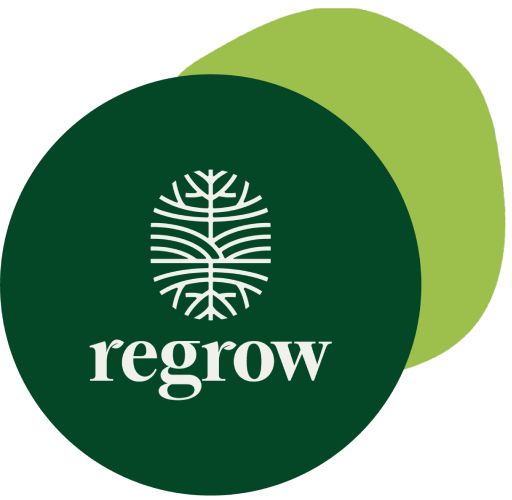Earlier this week, the Intergovernmental Panel on Climate Change released its Sixth Assessment Report (AR6), titled, “Climate Change 2022: Impacts, Adaptation and Vulnerability.” In it, IPCC’s Working Group III assessed literature on the scientific, technological, environmental, economic and social aspects of climate change mitigation across a variety of industries and sectors. One of those sectors was agriculture.
The Regrow team is working to digest the 3,000-page report and help our community understand what it means for climate policy, the agrifood supply chain and the future of sustainable farming. Here, we’ve started by identifying some of the top trends from the report and evaluating what those trends mean for all of us.
Agriculture: A Heavy Burden
In 2019, approximately 22% of total net anthropogenic GHG emissions [13 GtCO2-eq] came from agriculture, forestry and other land use (AFOLU). That’s a significant portion of our GHG emissions… meaning there’s a lot of room for improvement. What’s more, policy development is still limited when it comes to emissions from agriculture.
Our industry is evolving quickly, and we’re aware of our potential impact in climate mitigation. Now the question is: where and how can we progress?
Reviewing the report’s top trends can help us understand how we can best engage to transform the future of our food systems.
AR6: Top Trends in Agriculture
The most significant trends we found in this report are as follows:
- International Collaboration is Imperative. According to the IPCC, the agriculture and land use sectors are evolving practices, policies and regulations on an international level. Now, more than ever, it’s important to collaborate on a global scale.
At Regrow, we agree that the future of agriculture is an international effort, and we are eager to collaborate with all partners that share our vision of accessible, sustainable farming. We work with policymakers and governing bodies, like SustainCERT’s Value Change Initiative, to ensure that our science and technology is rigorous and viable on a global scale. Additionally, we work to ensure our science and technology are verified and validated on a variety of crops across the globe. Standards like this are non-negotiable, and the best way to uphold these standards and practices is to ensure everyone is involved in developing them. - Everyone Contributes to our Efforts. According to the IPCC, there’s been a noticeable and “increasing diversity of actors and approaches to mitigation. Recent literature highlights the growing role of non-state and sub-national actors including cities, businesses, Indigenous Peoples, citizens…and public-private entities in the global effort to address climate change.” For us, this means that one actor’s progress is good for all of us. A grower’s efforts can help a company reduce emissions, and that company can create low-emission food for consumers. Efforts that draw connections across the agrifood supply chain, from growers to consumers, have the potential to make a significant impact in accelerating our mitigation efforts.
- Technology will Drive Success. Working Group III has found that digital technologies can contribute to the mitigation of climate change. It is our collective responsibility to advance all the tools available to us — and perhaps discover new tools — to drive change.
This includes agriculture technology, remote sensing tools and precision agriculture practices, along with the technologies that help us track our progress and unlock incentives for practice adoption. Learn how we can focus tech innovation on growers’ needs. - Sustainability Must be Accessible on Every Acre. The IPCC states, “Persistent and region-specific barriers continue to hamper the economic and political feasibility of deploying [land use-related] mitigation options. Assisting countries to overcome barriers will help to achieve significant mitigation.” Our climate mitigation efforts are completely reliant on the resources, the policies and the laws that govern our agricultural lands. In order for us to make change on a large scale, we will need to make sure our efforts can cross borders and overcome political and economical roadblocks.
Regrow is working on this today: we’ve developed our solutions to be economically scalable across countries and regions. We also work through grant programs (see our recent project with the Bill & Melinda Gates Foundation) to ensure that sustainable farming practices are accessible to growers across the globe. - We Won’t Win by Simply Cutting Emissions. This month’s report identified that “total net anthropogenic GHG emissions have continued to rise during the period 2010–2019, as have cumulative net CO2 emissions since 1850. Average annual GHG emissions during 2010-2019 were higher than in any previous decade, although the rate of growth has slowed…” Cutting emissions will not undo the damage that’s been done. We need to find ways to cure this disease, rather than just stopping its spread.
In our opinion, agriculture is one of the best ways to do this. Land can sequester carbon and help us not only reduce our impact, but reverse some of our past actions. Reducing our emissions is important today, and reversing our past actions will be important tomorrow. Learn more about our efforts to sequester carbon through agriculture.
The Future of Sustainability
Of course, agriculture will not be the sole solution to climate change. As an industry, we cannot compensate for a lag in progress in other industries, or in slow policy development. However, according to the IPCC, mitigation in agriculture can help reduce emissions by up to 4.1 billion metric tonnes per year.
That’s a significant impact. At Regrow, we are driving towards that impact with science, technology and partnerships across the agrifood supply chain. Innovation is always within reach, and we plan to continue this progress and build the health of our planet and our future.
Learn more about Regrow’s mission and vision.
.png)


